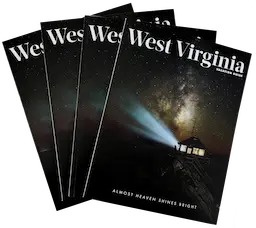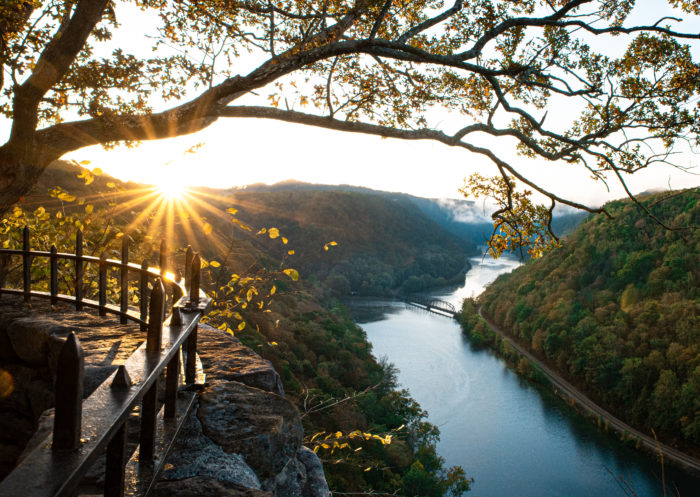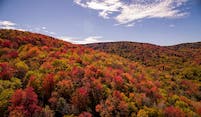Art deco entertaining: Add color and charm to your table with this classic-modern trend
One of America’s most iconic and collectible brands of dinnerware comes out of a small town in West Virginia.
Even if you don’t know the name “Fiestaware,” you probably recognize the style of these classic plates, mugs and bowls, and you’ve almost certainly eaten off of some in the past. Bold solid colors, concentric circles, simple utilitarian design– Fiestaware remains the ceramic embodiment of the Art Deco style that dominated the mid-1930s.
The New York Times has called Fiestaware “the most collected brand of china in the United States.”
The timeless brand has kept to its classic Art Deco roots, but still creates new styles for the 21st century. Modern Fiestaware is heavier and more durable, but they still stick with the signature designs and the trademark of Fiesta– the bold, singular colors.
Part of what makes the line so popular is its versatility— the single colors make it easy to mix-and-match pieces to create a unique retro-chic setup to complement any dining area, and any personality.
Plus, what fashionista doesn’t want to invest in a trend that’s stood the test of time?
The company releases 1 new, much-anticipated color every year. But for the true vintage-hunters, Fiestaware from the 30s, 40s and 50s still abounds— although certain rare colors can command high prices (so they’re especially fabulous antique finds!).
History of an American icon
The dinnerware’s parent company, Homer Laughlin China Company, got its start in the 1870s across the river in Ohio. They had lucrative contracts with stores like Woolworth’s and even some cereal producers who liked to include bowls with their products.
By the early 1900s, the Homer Laughlin was one of the most successful ceramic companies in the nation, and decided to literally build an entire town from the ground up— the town of Newell in West Virginia’s Northern Panhandle. Just a couple miles from both Ohio and Pennsylvania, Newell is also the farthest-north city in West Virginia.
At its peak, Homer Laughlin employed 3,000 workers at several cutting-edge ceramic factories in Newell.
When the China Works introduced Fiestaware in 1936, the U.S. was slowly climbing out of the Great Depression. Their colorful, mass-produced but still quality, modern yet tasteful dinnerware was just the thing that middle-class families getting back on their feet wanted to brighten up their dining rooms.
Throughout the rest of the 30s and 40s, Fiestaware came to dominate U.S. markets. At its peak the line featured 64 different items: mugs, saucers, serving bowls, trays, vases and more. They were originally in red, yellow, cobalt blue, green, ivory and turquoise.
Although the company always stuck to its signature style of single, bright colors, the palette followed along with fashions and trends of the era. For example, in the early 1950s, Fiesta moved toward more pastel solids, then back to bolder hues in the early 1960s, and finally more earth tones for the “natural” style of the early 1970s.
In 1972, Homer Laughlin retired the entire Fiesta line of dinnerware. It seemed like times had changed enough that an icon of the Art Deco 1930s was now out-of-date.
But American consumers still wanted these colorful dishes! Baby Boomers were moving into their own houses, and they had fond memories of Fiesta from their childhoods. As American culture embraced nostalgia and became more “retro,” Fiesta dishes began selling for hundreds of dollars.
But Fiestaware was not destined for only vintage collectors: In 1986, the New York City retailer Bloomingdale’s reintroduced new lines of Fiesta, and the Homer Laughlin company continues to churn ceramicware out of its kilns.
Fiesta-fy your next feast
You can easily find Fiestaware online, or buy it direct from the Homer Laughlin factory in Newell. Better yet, contact the factory for a tour of both the manufacturing facility and its fascinating museum of china pieces that date back into the 1870s, long before the advent of Fiestaware.
The best way to find vintage pieces is to start combing antique and vintage shops in West Virginia.
You might get lucky and find a great deal at Homer Laughlin’s outlet shop, or their wildly popular tent sales in Newell and Flatwoods, which draw thousands of shoppers. Some people even camp out for first pick of the pieces.
No matter where you find it, whether modern or vintage, when you eat off a Fiesta plate or sip out of a Fiesta mug, you are experiencing a little bit of history that taps into the glory years of American style, manufacturing and homemaking.
This post was last updated on July 30, 2020








